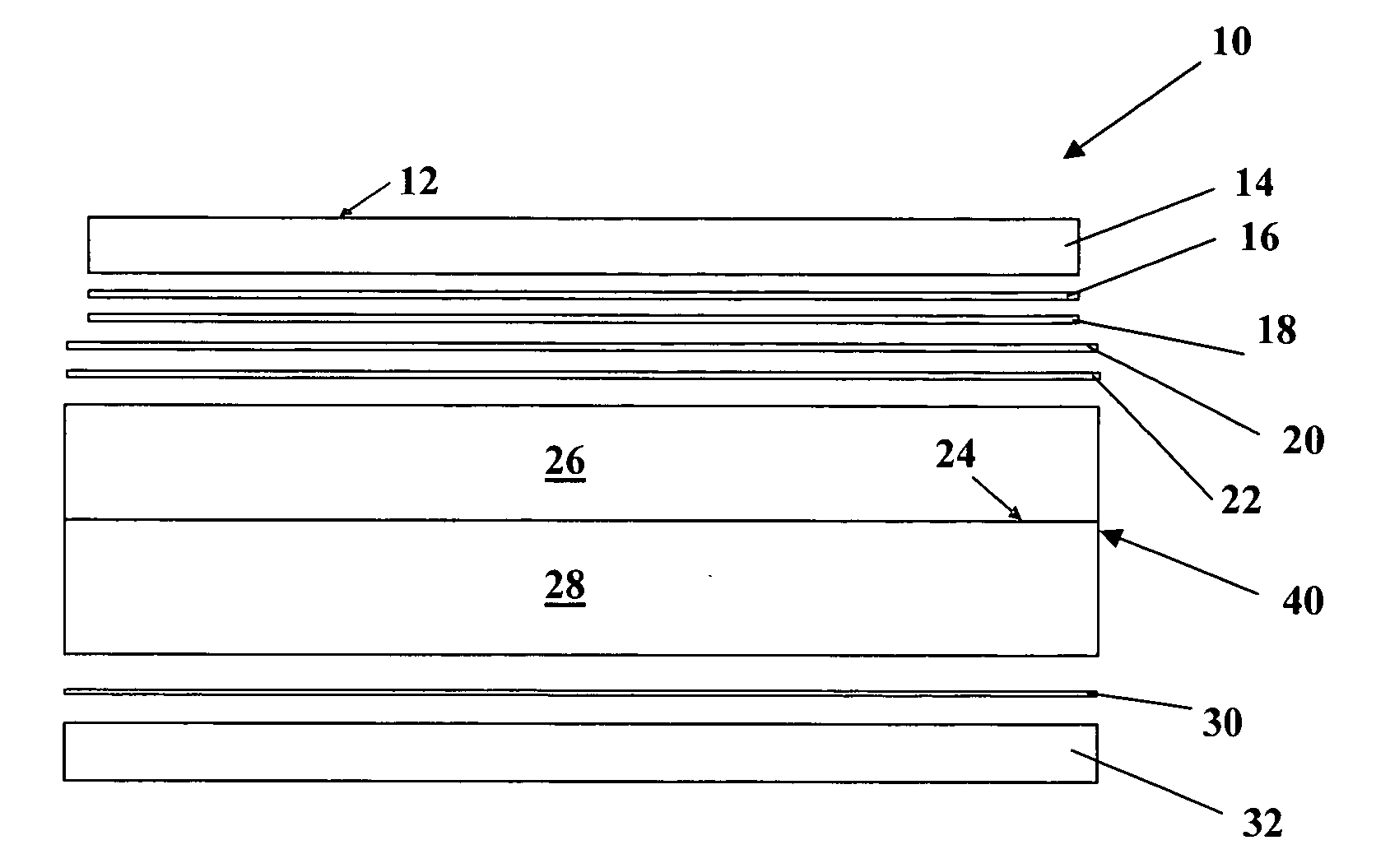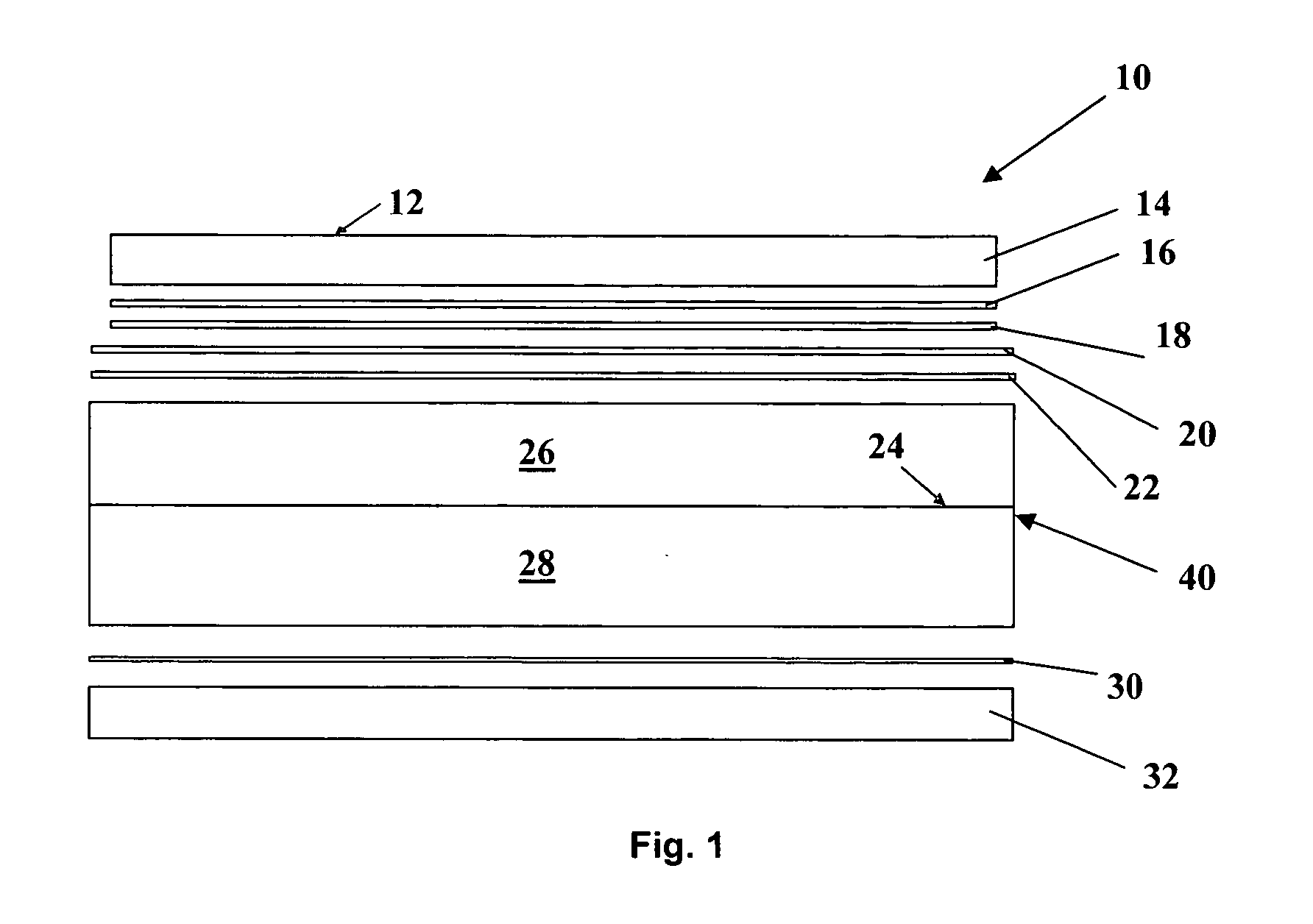Flat panel display with external integral heater
a liquid crystal display and heater technology, applied in non-linear optics, instruments, optics, etc., can solve the problems of increasing increasing the cost of the cover glass, and increasing the adverse effect of display performance, so as to increase the weight of the display and create optical problems
- Summary
- Abstract
- Description
- Claims
- Application Information
AI Technical Summary
Benefits of technology
Problems solved by technology
Method used
Image
Examples
Embodiment Construction
[0007]FIG. 1 illustrates one embodiment of the flat panel display 10 of the present invention. According to known liquid crystal display (LCD) technology, a liquid crystal display 40 comprises a front plate 26 and a back plate 28, where the front plate is typically referred to as the color plate and the back plate is typically referred as the thin-film transistor (TFT) plate. Each of these plates is typically manufactured from glass. A thin layer of liquid crystal material 24 is contained in a thin cavity formed by known techniques between the plates 26, 28. In one embodiment of the present invention, a layer 20 of an optically transparent electrically conductive material is coated directly on the outer surface of the LCD color plate 26 under the front polarizer layer 14. A typical material for this optically transparent electrically conductive material is indium tin oxide (ITO), although other materials are known and may be successfully used. However, for purposes of this disclosur...
PUM
| Property | Measurement | Unit |
|---|---|---|
| electrically-conductive | aaaaa | aaaaa |
| optically-transparent electrically-conductive | aaaaa | aaaaa |
| optically-transparent | aaaaa | aaaaa |
Abstract
Description
Claims
Application Information
 Login to View More
Login to View More - R&D
- Intellectual Property
- Life Sciences
- Materials
- Tech Scout
- Unparalleled Data Quality
- Higher Quality Content
- 60% Fewer Hallucinations
Browse by: Latest US Patents, China's latest patents, Technical Efficacy Thesaurus, Application Domain, Technology Topic, Popular Technical Reports.
© 2025 PatSnap. All rights reserved.Legal|Privacy policy|Modern Slavery Act Transparency Statement|Sitemap|About US| Contact US: help@patsnap.com


